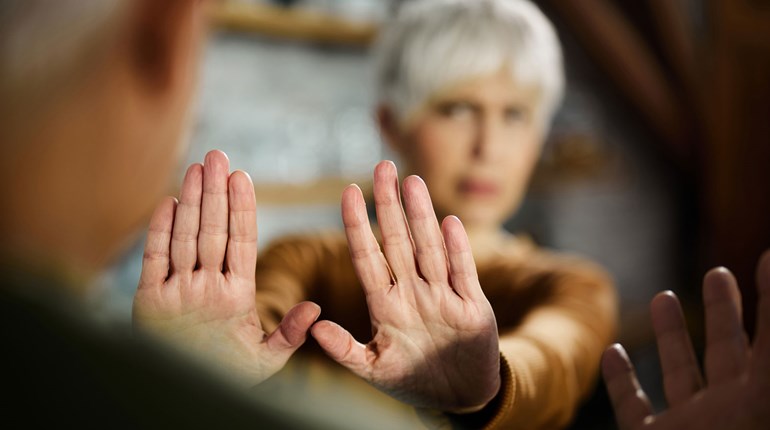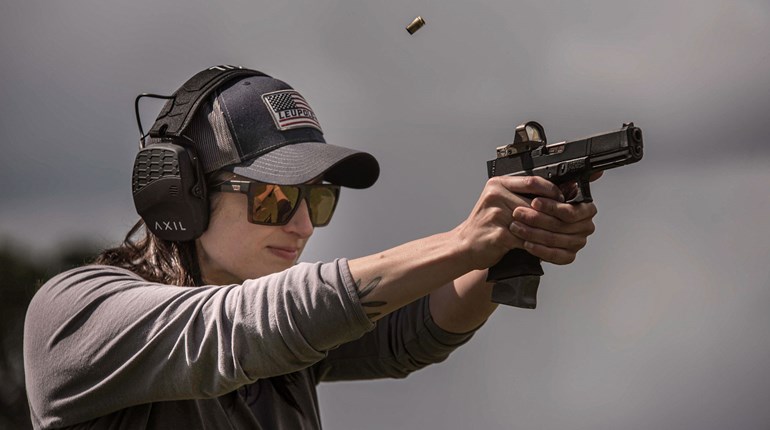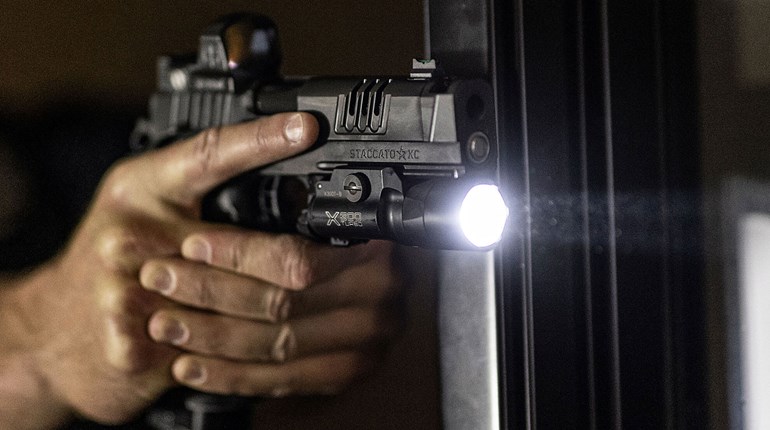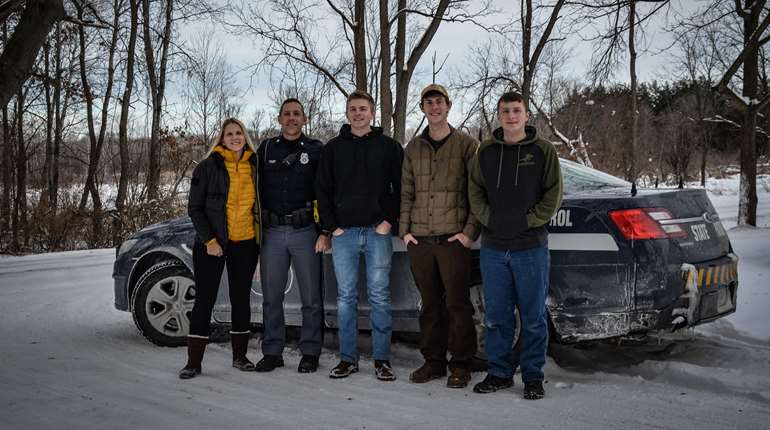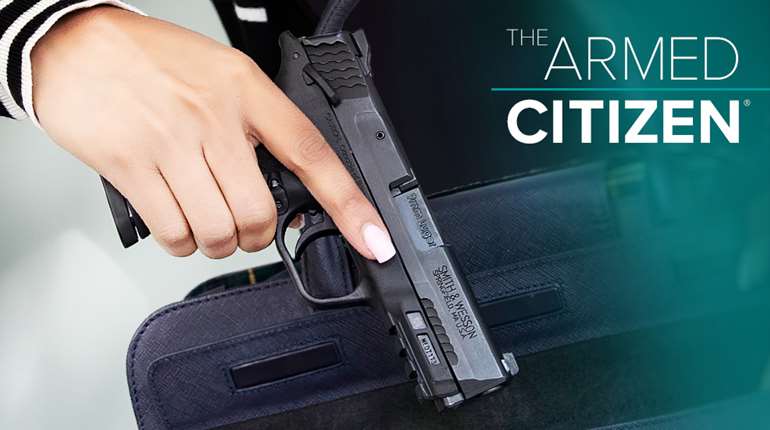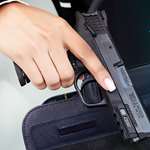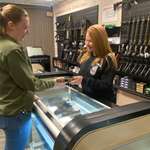
I’ve long thought of myself as a pretty good rifle shot because not only do I shoot well from a bench, but I’ve also put in plenty of practice using shooting sticks, improvising rests in the prone position, shooting from sitting and kneeling, and trying other off-bench positions. But all my illusions of being a good rifle shot got blown away in an instant the first time I went on a spot-and-stalk hunt for pronghorn. After a long hike and a scramble up a mountainside, I was so out of breath that the crosshairs were bouncing all over the place. My heart was pounding, my chest was heaving up and down, and all that movement was translated into the gun. There was absolutely no way to make a good shot.
I learned a tough lesson that day—I was only a good rifle shot under calm, ideal conditions. Throw some physical exertion into the mix and things went haywire! I’m still working on my physical fitness, but I have picked up some techniques that help me get a shot off when I’m out of breath.
What Getting Winded Does to Your Body
All sorts of physical changes happen when you are gasping for air. Your heart rate goes up and the stress (combined with adrenaline) actually changes your vision. Your pupils can dilate, and your field of vision narrows—basically, you get a sort of tunnel vision, where you see one thing sharply while the rest of your visual field becomes blurry. Peripheral vision goes out the window.
At the same time, because your body is crying out for more air, it’s easy for you to lose focus on whatever you’re trying to look at and concentrate all your energy on getting enough oxygen. As your lungs expand and contract in an exaggerated fashion to gulp in more air, your whole upper body moves with them. This movement transfers into the gun (rifle or handgun), making you less steady and making it impossible to keep the crosshairs still.
Short-Term Solutions
Normally, the best time to squeeze the trigger and execute a good rifle shot is during your natural respiratory break—that is, the time between when you let out one breath and your lungs are empty before you inhale again. Take a second right now and pay attention to your breath after you exhale. You can almost certainly rest with empty lungs for several seconds, very comfortably, before your body starts to ask for more oxygen and initiates the next inhale. That pause is when you should squeeze the trigger, because your body is as still as it can be, all else being equal.
However, when you’re out of breath, that pause ceases to exist—your breathing is so rapid that a gulping inhale immediately follows each exhale, with no time to steady the crosshairs and squeeze off a good shot. Getting the steadiest rest you can will help, and the prone position is best for this. If the animal you’re watching is calm and shows no signs of going anywhere, you might be able to wait until your body has settled before you take a shot. We’re seldom this lucky, though.
If it’s a shoot-it-or-lose-it situation, try holding your breath at the top of the inhale. Filling your lungs normally makes you less steady, but when you’re out of breath and all your body wants is more oxygen, let it have some and hold for a second at the top of your breath instead of the bottom. This only works for a short time, so you’ll need to shoot quickly (without rushing or jerking the shot) or wait for the next inhale. It’s a shorter window than you’d have if your breathing were steady and you could shoot with empty lungs at your natural respiratory break, but it can give you a couple seconds of steadier crosshairs.
It's important to realize that the crosshairs are almost certainly not going to be 100 percent still. You have to make your peace with that and learn how to control the wobble. One common practice is to focus on making a circle, oval or figure-8 shape with the crosshairs on the target, then concentrating on making that shape smaller and smaller until it fits entirely within the vital zone of the animal. Then you can shoot and be assured you’re aiming somewhere in the kill zone. If you can’t get the shape small enough, don’t shoot. This is best practiced before your hunt, which leads me to the next point.
Mid-Term Methods
This won’t help you in the heat of the moment on a hunt, but practicing shooting while you’re out of breath can help you get comfortable with the sensations and give you a chance to experiment with what works best for you. If you have a place to shoot where you can do this safely, you can work to get yourself out of breath before shooting your handgun or rifle. Do jumping jacks on the line if you have to.
Competitions like 3-gun and PRS (Precision Rifle Series) are also great ways to get a lot of practice shooting between, or sometimes during, acts of physical exertion. You’re often out of breath and adrenalized, which does a good job of simulating what you’ll experience on a hunt.
Long-Term Methods
In the long term, the best thing you can do to improve your shooting while you’re out of breath is to work on your physical fitness so you’re less apt to get out of breath in the first place and can recover more quickly when you do get winded.
I know—I hate cardio, too. What I’ve found works best for me is to get on the stair climber at the gym or crank the treadmill up to max elevation, and go at a slow and steady walking pace. I go just fast enough that my heart rate settles at the top of the moderate zone, which for my age is in the high 120s to low 130s. This is enough to get me mildly winded but not huffing and puffing (if I have to huff and puff I’ll just quit working out because I hate it that much!) and to really work my lower body muscles—the mountain-climbing muscles. If you live somewhere with actual hills or mountains to climb and you want to exercise outside, all the better. Whatever type of cardio you enjoy is great, and some weight training (legs for climbing, arms for holding a firearm without fatigue) absolutely will help as well.
Realize that getting into better shape isn’t necessarily correlated with losing weight, although often the two go hand in hand. You can absolutely improve your endurance and fitness at any size, so don’t feel intimidated. The truth is that fitness really can make you a better shooter, and any kind of moderate cardio will help increase your lung capacity.












